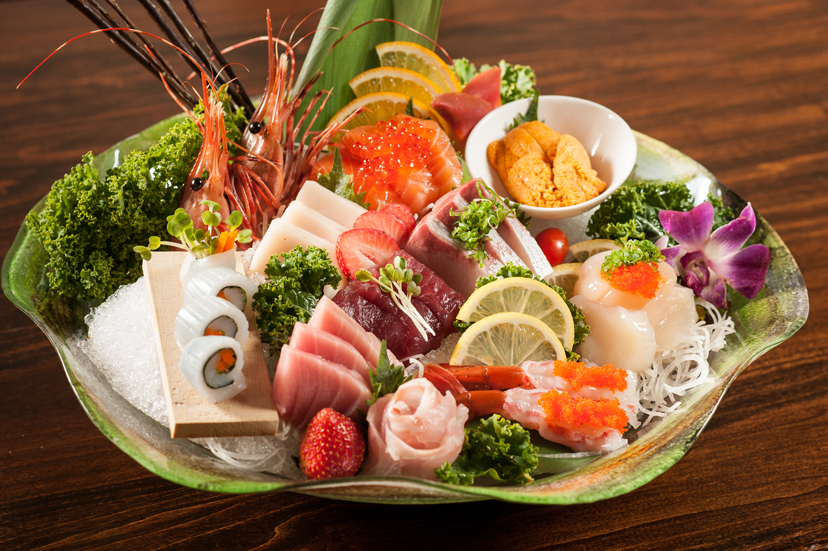Sushi vs Sashimi

What is sushi?
Beginning as a method of preserving fish centuries ago, sushi has evolved into an artful, unique dining experience. In its earliest form, dried fish was placed between two pieces of vinegared rice as a way of making it last. The nori (seaweed) was added later as a way to keep one’s fingers from getting sticky.
Technically, the word sushi refers to the rice (the Japanese word su means vinegar, and shi is from meshi, the Japanese word for rice, hence sushi is ‘vinegared rice’), but colloquially, the term is used to describe a finger-size piece of raw fish or shellfish on a bed of rice or simply the consumption of raw fish in the Japanese style (while sushi is not solely a Japanese invention, these days, the Japanese style is considered the de facto serving standard). This can be eaten as is, or is often dipped into shoyu(Japanese soy sauce) and then eaten. Great care is taken in the creation of the dish and the many methods of preparing the food indicate the importance of appearance to the educated consumer. Sushi is a work of art as much as a food, and while it isnow available in a western ‘quick and easy’ serving style, the traditional ways are far from lost.
Two Common Types of Sushi
Nigiri: A slice of raw or cooked fish or shellfish pressed onto a mound of vinegared rice, with a little wasabi (think the strongest of horseradishes) in between.
Maki: Layers of raw or cooked fish or shellfish, vegetables and vinegared rice on a sheet of dried sea kelp rolled into a cylinder then cut into pieces. Temaki follows a similar setup but uses only a half sheet of dried sea kelp wrapped around the ingredients like a cone; also known as a hand roll.
Don’t Forget Sashimi
Sashimi: A slice of raw fish or seafood only. The term sushi refers to the presence of the vinegared rice, so sashimi does not technically qualify as such, but you will see it listed alongside the sushi offerings at Japanese restaurants.
Sashimi is often cut in different ways to enhance the appearance of the fish. Hira zukuri is the standard rectangular shape cut. A thinner cut is called Ito zukuri, and is often no more than 1/16 inch thick. The thinnest, called Kaku zukuri is paper-thin and is often presented in a pattern.
What are those other things I see on my plate?
Depending on what you ordered and the whim of the chef, you might see items such as wasabi (the hot green Japanese horseradish-like rhizome), gari (pickled ginger, which comes in both a pink and a light tan color, with the lighter stuff usually indicating better quality). You may also see a large green leaf called shiso, which is often served with sashimi, and a shredded white mass of Japanese radish called daikon, which is also often served with sashimi.